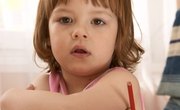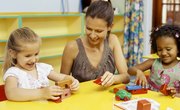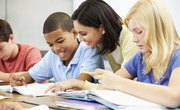A behavior checklist can be a helpful tool for teachers to use in the classroom. Behavior checklists help teachers quickly monitor students’ behavior to determine progress toward proper behavior, identify learning styles and recognize possible physical, behavioral or learning disorders. When creating one or two standard checklists to use with your students, include items that encompass a few broad areas, such as how students make decisions, solve problems and learn best.
Decision-Making
Making good decisions is a skill that students need to develop to help them become successful and productive adults. Analyze your students’ decision-making abilities quickly and simply with a daily checklist. Include a category in your behavior checklist for items related to decision-making, such as “Finishes assignments on time,” “Uses free time productively” or “Receives instruction respectfully.” These items help you focus on how a student makes decisions regarding time and authority.

Problem-Solving
A student’s need for improvement in problem-solving skills often shows up in expressing frustration over assignments, getting into fights or arguments with other children, complaining or being lazy. These are all ways students express an inability to solve a problem productively. Record instances when your students fight, talk back, get frustrated, complain or check out mentally and look for patterns to see whether the behavior occurs during a particular subject or time of day. It may be that the student does not understand a concept being taught in class and needs extra attention, or perhaps the student needs help learning how to resolve conflict with peers.

Learning Style
As a teacher, you understand that people learn differently. Some children learn best by hearing information; others learn best by seeing it, such as through reading; and still others learn best by experiencing or moving. Just as you provide lessons that incorporate all learning styles, create a section in the behavior checklist that allows you to quickly and easily make observations about the child’s learning style. Create items such as “Loves to read,” “Good listener” or “Likes to move.”

Physical Problems
Some physical, emotional, or behavioral problems or learning disorders manifest themselves through actions and attitudes that you can monitor and record on a behavioral checklist. Include categories on your checklist such as “Social/Emotional,” “Physical” and “Classroom Performance.” Within each category, list items next to two columns marked “Morning” and “Afternoon.” List things that you can quickly mark as you observe them. For example, include items such as “Short-term memory issues,” “Difficulty following directions” or “Poor concept of time” as items under your “Physical” category. Over time, notice whether certain items keep cropping up and discuss your observations with the child's parents. Filling out and saving checklists will help show your genuine concern for students and help show parents that your observations are based on reality and not just a general opinion you may have of their child.












